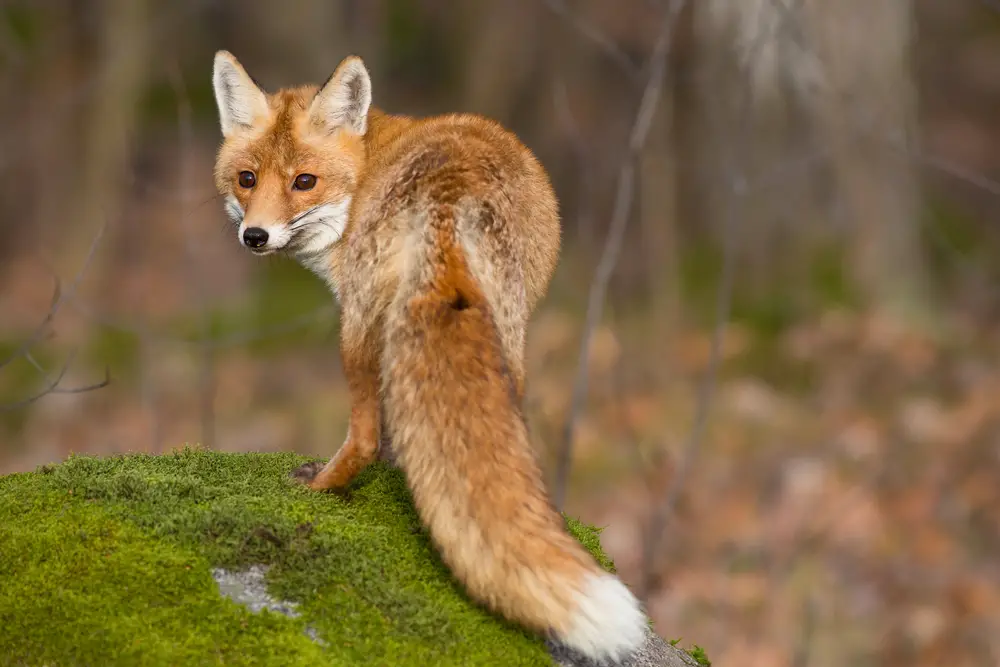Foxes are seen widely all across the world, different species of foxes have different traits, however, they will often have areas in which they are the same or similar to each other.
Similarly, foxes are a member of a family that has close ties to dogs and wolves. This leads us to ask if they are actually similar to dogs and wolves in some ways, like… do they bark? And do they wag their tails?
Foxes can wag their tails, and they make so many noises. One of these is barking.
Let’s learn a little more about this together, in what circumstances do they wag their tails and, why do they bark? Finally, what other curious behaviors do these animals have?
Do Foxes wag their tails?
It is entirely possible for a fox to wag their tail. Tail wagging is something that we see our dogs do when they are excited to see us. In a similar way, wild fox cubs wag their tails at their parents around feed time.
Wild dogs and wild foxes will provision their cubs, who will beg for food by rushing over with excitement. They will hold their bodies low to the ground, wag their tails rapidly, and nuzzle at the adult’s mouth while whining.
This happens in nature with both dogs and with foxes. Remember, they are actually closely related animals.
However, the only other time foxes have been recorded as wagging their tails is the same as dogs, when they have been domesticated, and they are around their human.

Foxes do have the ability to become man’s new best friends next to dogs, they are very similar in many ways and this means that they do have this potential.
Wild dogs and foxes will wag their tails as young cubs when it is time for food, domesticated foxes and dogs will wag their tails with joy when they are excited or happy, or when their favorite human is near.
Do Foxes bark?
It is key to remember that foxes are actually closely related to dogs, and thus, they bark. These animals make a wide range of noises. At night, you might hear them screaming as they fend off foes, or start mating.
They are also well known for barking, this is used as another type of call to contact or reach out to friends or rivals. This bark will sound very similar to that of a dog, it will sound more high-pitched and a bit shrill.
Fox cubs also bark much like the adults do, even when they are newborn and blind they will call to their mother to keep in touch to be safe. The bark of a fox cub sounds much more like a “bow- wow- wow”
However, barking is not the only noise they produce, they are also capable of letting out a very wide variety of whines, and squeals, all of which have different meanings that can change based on the body language and the context in which they are making the sound.
A squeal could be to show one fox submitting to another, however they may also squeal when excited.
Finally, foxes are also capable of making deep throaty sounds, a guttural noise in the back of their throat that can be called ‘clicketing’, this is a sound they usually make during the mating season.
Foxes are capable of a wide range of noises, barking being just one of these sounds that they can make.
What unique fox behavior is there?
Another unique behavior of foxes is their social structure. We often think of foxes as lone animals, however, they are actually very social, and their social structure is more like that of wolves than anything else.
They live in groups with around 3 or 4 adults being a common number, however, it can be as large as 10. This will usually be equal in number of males and females. Typically, only one female will breed, however, it can be three.
Fox cubs will be reared separated, however sometimes they can also be pooled together in one large litter. They tend to start birthing around spring time, and they will usually produce a litter of 4 or 5, but it can be up to 8, this is not unlike wild dogs and wolves.
For the first few weeks of life, the mother will spend almost all of her time with the cubs, and she will rely on the male to bring her food to sustain her and her cubs.
Unless cubs are disturbed, they will stay where they were born until early summer, or sometimes earlier if the weather is hot.
They will then lay above ground in rendezvous areas or in dense areas such as brambles, thorn patches, or in piles of trash, where they are protected.


